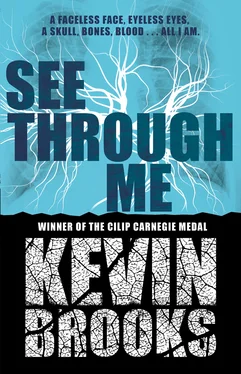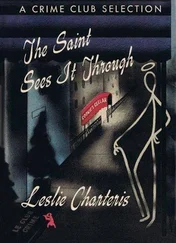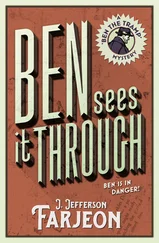‘Take the abnormalities themselves, for example. These can range from mutations in the DNA sequence of a single gene – as is the case in some forms of muscular dystrophy – to changes in the number and structure of entire sets of chromosomes. Some disorders are hereditary, others result from new mutations. And while these disorders are always present at birth, the symptoms of many conditions don’t become apparent until later in life. And these are just some of the variables. There are dozens more.’
Dr Reynolds cleared his throat. ‘So the problem we have, and the reason it’s so difficult to identify the specific cause of any genetic illness, is that unless we already know what we’re looking for, it’s like searching for a needle in a haystack the size of a mountain.’
It felt quite strange hearing the words ‘muscular dystrophy’. When Finch was first diagnosed, the doctors weren’t sure which type of the disease he had – there are at least nine different forms of MD – and there was even some doubt as to whether or not it was muscular dystrophy at all. It wasn’t much of a doubt – we were told that the chances of a wrong diagnosis were less than 1% – but it was the only hope we had, and it gave us at least something to cling on to. And I think that was the reason we stopped using the term ‘muscular dystrophy’. It wasn’t a conscious decision, and we weren’t even aware we were doing it at first, but I think we must have had the same irrational inner belief that by referring to the illness as muscular dystrophy we were accepting that that’s what it was. And if we did that we were giving up hope.
So Finch’s illness was just that – his illness. Or his sickness. Or his condition. Anything but muscular dystrophy.
We knew it was ridiculous, of course – as stupidly nonsensical as all superstitions – but the thing about superstitions is that once you start going along with them it’s very hard to stop. You don’t have anything to lose, you keep telling yourself. And you never know, do you? You just never know . . .
‘And there’s one more thing that needs pointing out,’ Dr Reynolds continued. ‘It’s widely acknowledged that the vast majority of our genetic material doesn’t appear to do anything at all. It’s known as junk DNA, and it’s believed to account for as much as ninety-seven per cent of the entire human genome. Now, to me, that makes no sense at all. The human body is a wonderfully efficient organism, and one of the things that makes it so efficient is that every single part of it – every cell, every molecule – has a clearly defined purpose and function. So how is it even conceivable that ninety-seven per cent of our being has no purpose or function whatsoever?’ He looked at me in silence for a few seconds, as if he was expecting an answer, but he’d gone off on such a tangent now that I wasn’t even sure what the question was. ‘The only explanation for junk DNA that’s ever made any sense,’ he went on, ‘is that just because it seems redundant, that doesn’t mean that it is . All it means is that we don’t know what it does. And if we don’t know what ninety-seven per cent of our DNA does, then we also know nothing about its abnormalities and what kind of disorders they might cause.’
Dad wasn’t sitting bolt upright anymore. He’d let himself lean back a bit, so he was resting against the back of the settee, and his hands were together in his lap. He was still not quite there though – still staring at nothing – but I knew the signs, and I knew he was on his way back.
I glanced at Dr Hahn, expecting her to be studying Dad, but her eyes were fixed on me.
She smiled.
It was a smile shaped by pity.
I didn’t like it.
‘Do you know what gene sequencing is?’ Dr Reynolds asked me.
I nodded. ‘Finch had it done. It’s when they take a sample of your DNA and use it to build up a kind of map that shows the details of all your genes, and then they analyse all the details to see if you’ve got any of the genetic faults that cause particular diseases. I mean, I know it’s a lot more complicated than that . . .’
I remembered, I remember . . .
Leaving the hospital with Finch and Dad, the three of us heading across the car park in bewildered silence. We’d just spent an hour with a doctor we’d never met before who was supposed to be giving us the results of Finch’s gene sequencing and telling us what it all meant, but none of us could understand what he was talking about. It wasn’t that he used too much medical jargon or anything, or that we couldn’t understand his accent – he didn’t have one – in fact, there didn’t seem to be anything wrong with the way he spoke at all. His voice was perfectly clear, the words he used easily understandable, and every time he began a sentence it seemed at first to make sense. But by the time he’d got to the end of it, it had somehow become incomprehensible. And if you told him that you didn’t understand, and asked him to explain it again, exactly the same thing would happen.
It was the weirdest thing.
And by the time we left his office, we were all so dazed and bemused by it that all we could do was walk in stunned silence together – along the hospital corridors, through the hospital doors, across the hospital car park . . .
We were nearly at the car, and Dad was just getting the keys out of his pocket, when Finch broke the silence.
‘Imagine serving him at McDonald’s,’ he said. ‘You’d be there for ever, wouldn’t you?’
We all pictured it for a moment – the doctor ordering something, the server not understanding, the doctor repeating it, the server still not understanding – and then I turned to Finch and saw the big stupid smile on his face, and that was it. We both just cracked up, laughing away like idiots, and once we’d started we couldn’t stop – snorting and hooting and giggling, falling about all over the place . . . we laughed so hard it hurt. It was so infectious that even Dad joined in after a while, and when we finally managed to control ourselves – our bellies still sore from laughing, our eyes still wet with tears – there was a moment when we were all together again . . . the three of us just standing there smiling at each other, not thinking, not worrying, not anything . . .
It was as happy as we were ever going to be.
‘We don’t usually carry out gene sequencing on our patients unless there’s a strong indication that their disease is genetic,’ Dr Reynolds said. ‘And of course we’ll always consider it for a patient who’s tested negative for everything else. But in your case, Kenzie, your condition was so extraordinary that we decided to start testing you for everything straight away, including genetic disorders.’
He went quiet for a few moments then, and from the way he looked away from me, focusing on something across the room, I thought he was bracing himself to give me some bad news. But either he changed his mind, or I was wrong in the first place.
‘As you know,’ he said, turning back to me, ‘genetic disorders can be hereditary, passed down from the parents’ genes. Some disorders only affect males, some only females, and others can affect both. Similarly, some conditions can only be inherited from the mother’s side, and others can only come from the father. So in cases like yours, when there are so many unknowns, it’s sometimes possible to narrow things down by looking into the patient’s family history. It’s a time-consuming process, and it often proves fruitless anyway, but as soon as we began asking questions about your family, we knew we might be onto something.’
‘Because of Finch, you mean?’ I said.
‘Well, we were reasonably confident there was no direct correlation between your condition and your brother’s, but that didn’t necessarily mean there was no connection at all. And because Finch had already had his DNA sequenced, all we had to do was get hold of the results and start looking for anything that might possibly relate to you.’
Читать дальше












